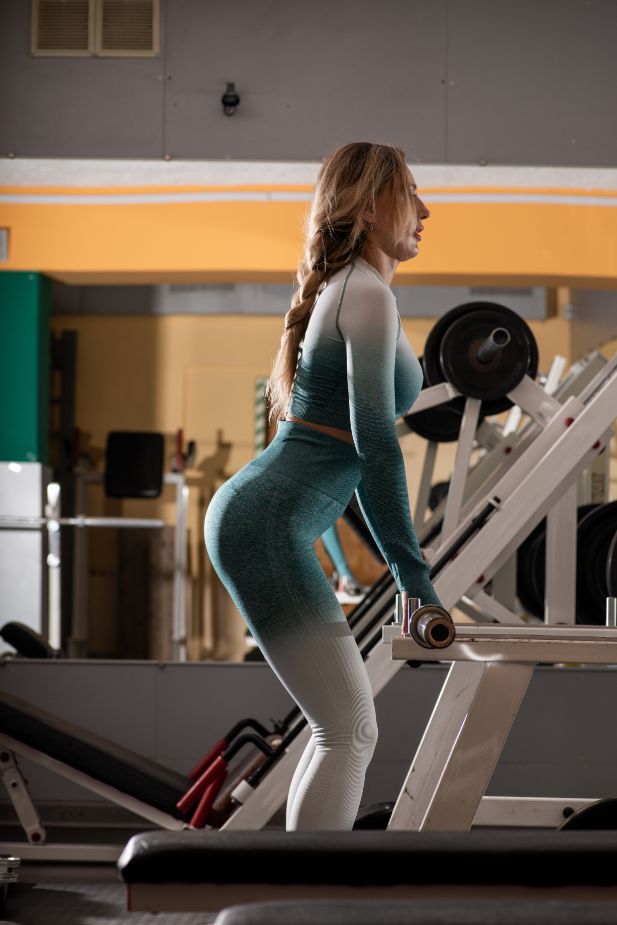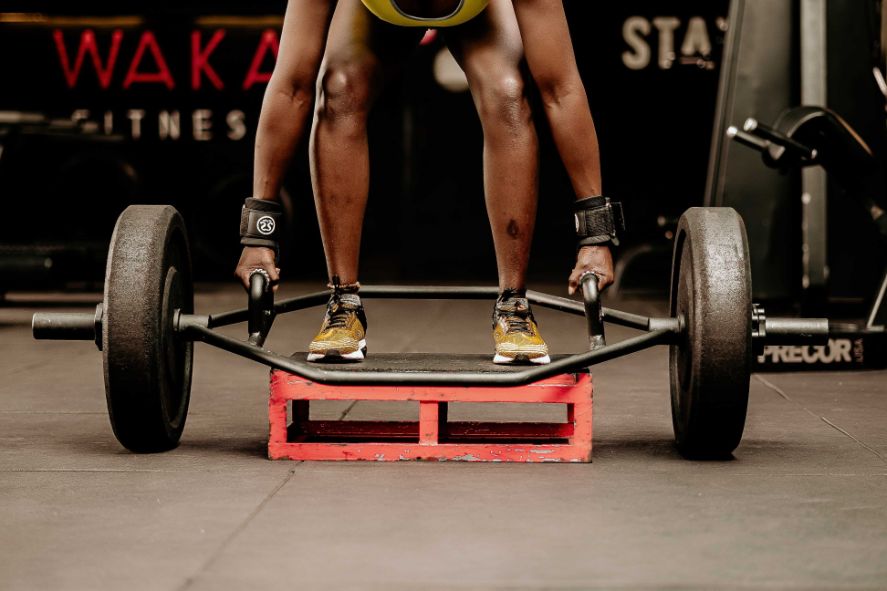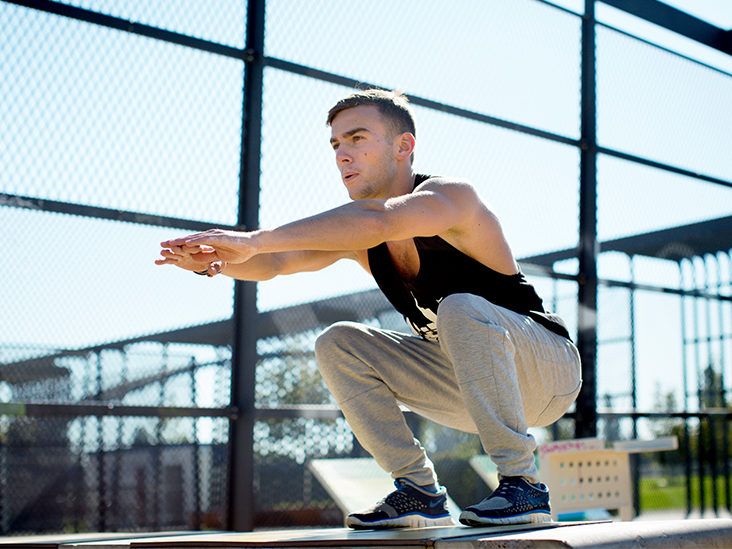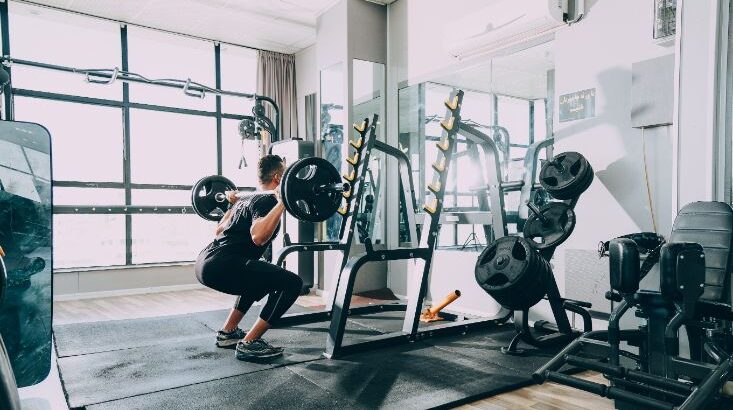The two largest exercises you will probably perform with a barbell are the squat and deadlift. It can be challenging to strike a balance between these two titans of strength and power, and you run the risk of missing out on the best outcomes. Can you perform squats and deadlifts on the same day? Yes.
If, however, you want to maximize performance, you can use the below-mentioned tip to complete both compound exercises on the same day. Please read this article thoroughly.
Should I Do Squatting And Deadlifting On The Same Day?
Squats and deadlifts can definitely be combined in a single workout, as we’ve previously stated, but whether or not you should depends more on your particular training regimen.
It’s typically advised to divide heavy lifting exercises into separate days during your training week, especially if you’re new to the gym. Squats and deadlifts are trained separately by even the most seasoned powerlifters, but why?
Both squats and deadlifts put a strain on your lower back, glutes, and legs due to their wide range of motion. Since the majority of your body is made up of these muscle groups, it is crucial to regulate your lower body routine to prevent overworking your muscles. To that end, we caution against it and urge you to lift at your own risk if you lack the strength and expertise to do both.
You can check out more information we have on Deadlift Dos And Don’ts: Things To Remember
Benefits From Doing Squats And Deadlifts On Different Days
Less Fatigue
Many of the same muscles are used in both squats and deadlifts, so performing them both on the same day could be taxing on your body.
Squatting and deadlifting on the same day will probably leave you with little energy for many additional exercises. Your workout won’t be as taxing if these big lifts are separated by a few days.
Lift More Weight
It doesn’t matter whether you deadlift or squat first; the fatigue from the first exercise will impact the second. Although it’s not a big deal for bodybuilding, lifting less weight could have an impact on your results if you want to maximize your strength.
Give Your Lower Back A Break
The lower back is heavily activated during both squats and deadlifts. Your risk of lower back pain and injury could increase if you perform squats and deadlifts on the same day. Your form might be impacted if you perform heavy deadlifts or squats while your lower back is fatigued. Read More: Are Deadlifts For Back Or Legs?
More Training Volume
You probably won’t be able to perform many sets of both exercises if you combine squatting and deadlifting in one exercise routine. Soon, both time and energy will begin to run out.
You’ll be able to perform more sets of each of these heavy lifts if you train them separately. Volume is a crucial training factor for increasing both muscle mass and strength.
Legs One Day, Back The Next
Squats can easily be classified as lower body exercises, but deadlifts are a little more difficult. Even though deadlifts involve the legs, many weightlifters consider them to back exercises.
You can treat deadlifts as a back builder rather than just another leg exercise by performing squats one day and deadlifts the next.
This makes it much simpler to incorporate squats and deadlifts into a body part split, which explains why bodybuilders favor this strategy.
More Time Per Lift
You can spend more time on each exercise if you squat one day and deadlift the next as opposed to training both exercises at once.
If you’re still learning how to perform these exercises correctly or want to improve your performance by performing additional sets of deadlifts or squats, this can be helpful. The ability to concentrate entirely on one exercise at a time with more time between reps allows you to make more rapid progress.
You Can Use More Variations
You have all the time you need to perform some interesting variations in addition to the standard version of each lift when an entire workout is devoted to either squats or deadlifts.
On a squat day, for instance, you could also perform box squats, banded squats, and/or paused squats. If you squat and deadlift on the same day, you won’t have the time or energy to do that.
While squatting and deadlifting on different days usually works well, there are a couple of disadvantages:
- You’ll have to do two hard and heavy workouts using similar exercises twice per week
- Some lifters may struggle to recover between their squat and deadlift workouts
- Missing either the squat or deadlift workout could throw off your entire training plan
Benefits From Doing Squats And Deadlifts On The Same Day
Powerlifting-specific
Powerlifters compete in the squat, bench press, and deadlift all on the same day. Each lift is given three tries, and the contest is won by the competitor with the most total attempts. When performed on the same day, squats and deadlifts mimic the demands and lifting sequence of competitive powerlifting. It is conceivably the most sport-specific way a powerlifter can train.
Less Warm-up Required
You won’t likely need to spend a lot of time warming up for the second exercise because squats and deadlifts use similar muscles and movements. Warming up for squats and deadlifts can be very time-consuming, so doing both these lifts on the same day may make your workouts shorter.
Increased Muscle Potentiation And Activation

Your nervous system will be greatly stimulated by heavy squats, which may improve deadlift performance. Additionally, deadlifts might feel a little bit easier because they have a smaller range of motion than squats.
Fewer Sets Required
Between squats and deadlifts, there are some notable muscle overlaps. The second exercise will therefore provide good training benefits even if you perform fewer sets.
For example:
- Squats – 6 sets of 3 reps
- Deadlifts – 3 sets of 3 reps
Due to the fatigue from the first exercise, even though the volume for deadlifts is significantly lower than for squats, your deadlift workout will still be effective.
More Recovery Time
Squats and deadlifts are best trained together so you have a full week to recover and grow before working for those motions and muscle groups again. You have less time to recover if you squat one day and then deadlift just a few days or so later, which could hinder your progress.
2-3 days of rest IF you are using moderate weights or recovering quickly in between workouts, THIS SHOULD BE ENOUGH. However, if you are lifting extremely heavy weights, are older, or recover from workouts more slowly than average, the extra time you gain from performing both exercises at once may be very beneficial.
Reciprocal Benefits
Although squats and deadlifts can be done separately, it can also be argued that one of them serves as a support exercise for the other.
Your deadlift performance will improve by working on your squat, and vice versa. Similar to performing the main lift followed by an accessory movement, training both exercises simultaneously is not all that different.
Even though it’s not a common training strategy, squatting and deadlifting on the same day are effective. However, drawbacks to consider include:
- There won’t be much time or energy for assistance exercises
- You may have to reduce your training volume
- The performance of the second exercise will be affected by the first
- This could be a very long workout if you are training for strength, using very heavy weights, and taking 3-5 minutes between sets
Why You Should Not Combine Squats And Deadlift Training?
Increasing Training Experience
If you’re a lifter who is getting better and better, you’ll need to use more training volume over time in order to gradually overload. That could mean that you would have a very difficult time fitting in squats and deadlifts on the same day during your training weeks.
Regardless of whether you are following a higher volume or higher intensity training prescription during the first lift, you might find that you are developing enough fatigue to seriously limit your ability to carry out any meaningful training for the second lift.
In this situation, it would probably be a better idea to add the other lift on a different day so that there is at least one day between training the squat and deadlift.
Previous Injury History
The history of prior injuries at specific body sites is among the most important indicators of potential injury.
It may be a wise programming choice to ensure that the squat and deadlift do not get programmed together if you have a history of injuries in any area that squatting and deadlifting use or worsen.
If you train the other lift right after squatting or deadlifting, you might not have as much focus or technical integrity, which will increase your risk of injury.
Training every lift from scratch will help you maintain your mental focus on performing the lifts safely.
Powerlifters are prone to chronic overuse injuries, which happen to them quite frequently. There is an inherent risk of high stress on these body regions, which are also put under a lot of strain during squatting and deadlifting, as the majority of research indicates [5][6] that knee and back injuries are frequently experienced by powerlifters.
This presents a compelling case for training them separately if it is possible to do so.
Greater Level Of Fatigue

You’ve probably heard the saying “no pain, no gain,” but if you perform both squats and deadlifts, we guarantee you’ll feel it in the morning. It will take some time to recover from the fatigue because the squat and deadlift combination works for such large muscle groups. The good news is that you’ll recover more slowly even though the recovery process will be painful.
Squat Before You Deadlift
In the end, it’s up to you to choose which exercise to perform first. Either one can be used as a starting point if your main objective is to strengthen your lower back and posterior chain. It’s crucial to take into account which exercise requires more energy, though.
When transitioning from one extremely demanding exercise to another, carryover of fatigue might be an issue. There shouldn’t be any problems if you properly control the duration and intensity of each exercise.
While it is an option, you should be aware that doing deadlifts before squats will cause you to tire out more quickly. We previously discussed the problem of carry-over fatigue, which could lead to you losing form or becoming exhausted if you decide to begin with deadlifts, particularly if you’re using heavy weights.
Because they work many more muscle groups than squats, deadlifts also work your lower back, forearms, abs, shoulders, and traps. Given the energy used to perform your deadlift, switching to squats will be much more difficult. Therefore, we strongly advise performing squats before deadlifts.
How Can I Squat And Deadlift The Same Day And Get The Most Gains?
You’ll need to alter your strategy when you switch to performing both the squat and deadlift on the same day. In order to improve the effectiveness of deadlifts done after squats, you must make some clear adjustments to the way you train.
Volume And Intensity
If you’ve been used to performing squat days and deadlift days, you obviously need to reduce your training volume. It will take some time for you to adjust, but you can go back to your previous working sets or volume.
You’ll need to use your deadlift to make up for the excessive volume in your squat. It’s one of those trade-offs that can be challenging at first but ensures that you advance over time.
In order to achieve 100% for both lifts, we advise lowering your volume on squats to around 60-75% of what it normally is. This alone will result in gains, but it also gets you ready for the process of deadlifting after squatting, which will take time.
The intensity of your squats can probably stay the same, but you might want to back off slightly on the deadlift. You will need to develop the ability to perform while not feeling as “fresh.” to account for the additional fatigue.
Reduce your weight by 10-15% and then gradually increase it while maintaining the same number of reps and sets. Since you’ll be gaining muscle anyhow, you can concentrate on using proper technique as you increase the weights you’re currently working with.
These procedures shouldn’t take longer than 2-4 weeks, but they’ll produce fantastic outcomes over the long run.
Intermediary Exercises
Recalling the Powerlifting method of training, one element that makes it so effective is the bench press performed in between squats and deadlifts. This type of middle-distance upper-body exercise is excellent for promoting recovery in the body.
The fatigue will be much more apparent if you immediately follow squats with a deadlift. Put upper body pressing exercises in between squats and deadlifts if your session calls for them but probably not upper back exercises.
These can help your lower body rest and recover so that you don’t get too exhausted. To strategically prepare for deadlifts, add a few exercises here. Alternatively, you can get your body ready for deadlifts by doing something quick and strong like some box jumps with adequate rest intervals.
Getting this little bit of rest can have a huge impact on how you feel, especially if you’re consuming water, carbohydrates, and electrolytes during your workout. Spend some time on it, and you’ll reap the rewards.

Alternate Your Focus, Add Some Variety
It doesn’t have to be all about both every time just because you’re doing squats and deadlifts on the same day.
You shouldn’t just pile on as much weight as you can when deadlifting and squatting. Additionally, they shouldn’t always be squatting or deadlifting; instead, you should consider your own weaknesses and use the appropriate variations.
For lighter days and greater emphasis on hip hinging, Romanian deadlifts are a great option. To allow the body to recover and grow in between heavier sessions, you can have lighter days. Over time, including this variety may even encourage greater growth.
One way to make squatting and deadlifting work better are to have a light squat on your heavy deadlift day – and vice versa. This enables you to continue improving both without overtraining either movement.
Maxing out both the squat and the deadlift on the same day is not necessary. For example, it might entail Romanian deadlifts and paused squats on your lighter days!
Frequently Asked Questions
Can You Get Bigger Through Deadlifts?
This is a question that is frequently asked, and depending on your objectives, it may be possible to get bigger through a deadlift workout. Deadlifts are fantastic for building your superficial back muscles, gluteal muscles, core muscles, and even your forearms if you’re doing hypertrophy training.
Just be careful to control the amount of weight you use, as well as the number of sets and repetitions you perform. Controlled movement at a weight that is heavy but manageable is essential for hypertrophy training.
Is Deadlifting Before Squatting Bad?
The act of deadlifting before squatting is not inherently bad. One widespread misconception is that if you get too exhausted, you run the risk of hurting your back or another body part. You must be careful to properly control the volume and intensity, which is a crucial point to keep in mind.
If your initial deadlift training was challenging, you might want to keep your subsequent squatting easy. You might be able to push the squatting harder if the training for the initial deadlifts was simple.
Can You Deadlift Right After Squatting, Or Should You Wait Until After Another Exercise?
You can certainly deadlift right after squatting, in fact. Directly following a squat with a deadlift is not necessarily bad. Squatting will undoubtedly exhaust you to a point where it might affect the muscles used for deadlifting.
If you perform a different exercise in between squats and deadlifts that does not involve muscles that cross over, you might feel more fatigue overall rather than just localized to the muscle. The muscles in the lower body may become even more severely fatigued if you perform another lower-body exercise after squats and deadlifts.
Final Thoughts
Squats and deadlifts can be done in the same workout, regardless of the leg day strategy you choose. In conclusion, whether someone should squat and deadlift back-to-back depends on whether they want to improve their strength and/or stamina vs. increasing muscle mass.
Due to the inability to lift heavy weights and reach maximum intensity during either of the compound exercises, those with pure hypertrophy goals—i.e., muscle building—would probably not use this training approach. Powerlifters and those looking to perform well should use this program.
